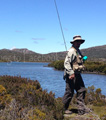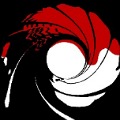Im betting the pictures of the wrecked firearms and peeled back barrels are a result more of a "blocked barrel".....
COLLECTOR 1
Pressure Signs: What, Where and Why?
31 posts
• Page 1 of 2 • 1, 2
Re: Pressure Signs: What, Where and Why?
More Brno's than you can poke a stick at..!!!!
- COLLECTOR 1
- Lance Corporal

- Posts: 216
- New South Wales
Re: Pressure Signs: What, Where and Why?
on_one_wheel wrote:looking at the primer for signs of pressure is actually the least accurate way of determining excessive pressure.
Measuring for case head expansion using a micrometer is how big boys do it.
So, what part of the case do you measure; just forward of the rim/head?
-

Gwion - Colonel

- Posts: 3978
- -
Re: Pressure Signs: What, Where and Why?
.
Last edited by happyhunter on 27 Feb 2017, 7:27 am, edited 1 time in total.
- happyhunter
- Warrant Officer C1

- Posts: 1303
- Other
Re: Pressure Signs: What, Where and Why?
Gwion wrote:on_one_wheel wrote:looking at the primer for signs of pressure is actually the least accurate way of determining excessive pressure.
Measuring for case head expansion using a micrometer is how big boys do it.
So, what part of the case do you measure; just forward of the rim/head?
The area immediately before the extractor grove.
Nick Harvey has a detailed writeup about this paticular method in his reloading manual.
I followed that method when I was in the quest for the hottest load my rifle could safely handle.
The end result was a load that goes so far beyond the typical reloading manuals max load that it's almost beyond belief.
Those super hot loads have improved accuracy because the increased velocity has reduced the affects of uncontrollable variables ... at the cost of barrel life of course.
Gun control requires concentration and a steady hand
-

on_one_wheel - Colonel

- Posts: 3595
- South Australia
Re: Pressure Signs: What, Where and Why?
Cheers. I'll go back and re-read that section of th NH manual.
-

Gwion - Colonel

- Posts: 3978
- -
Re: Pressure Signs: What, Where and Why?
happyhunter wrote:The primers are cratered due to sloppy firing pin hole and on the pic below that you can clearly see a mark that looks like a bulge but after running through the FL die they are fine.
How does the firing pin hole translate back to cratered primers? Because the pin is too small and traps pressure?
Weatherby Vanguard .223 Remington
Tikka T3 Varmint Stainless .243 Winchester
R.I.P. M1 Garand .30-06 Springfield
Leupold VX-R 4-12x40
Tikka T3 Varmint Stainless .243 Winchester
R.I.P. M1 Garand .30-06 Springfield
Leupold VX-R 4-12x40
-

BBJ - Corporal

- Posts: 347
- Northern Territory
Re: Pressure Signs: What, Where and Why?
BBJ wrote:happyhunter wrote:The primers are cratered due to sloppy firing pin hole and on the pic below that you can clearly see a mark that looks like a bulge but after running through the FL die they are fine.
How does the firing pin hole translate back to cratered primers? Because the pin is too small and traps pressure?
The clearence between the firing pin hole and firing pin is excessive and allows primer cup metal to flow into the space.
- happyhunter
- Warrant Officer C1

- Posts: 1303
- Other
Re: Pressure Signs: What, Where and Why?
on_one_wheel wrote:Measuring for case head expansion using a micrometer is how big boys do it.
Likely not many people with one lying around however.
Howa 1500 .270 WInchester
Savage Model 10/110 Predator .204 Ruger
Savage Model 10/110 Predator .204 Ruger
-

Gregg - Corporal

- Posts: 378
- South Australia
Re: Pressure Signs: What, Where and Why?
on_one_wheel wrote:looking at the primer for signs of pressure is actually the least accurate way of determining excessive pressure.
Measuring for case head expansion using a micrometer is how big boys do it.
Or anybody with the Hornady manual. You need one that does .0001". Big boys don't handload.
- happyhunter
- Warrant Officer C1

- Posts: 1303
- Other
Re: Pressure Signs: What, Where and Why?
happyhunter wrote:Big boys don't handload.
Huh?
CZ 550 American Safari Magnum in .416 Rigby
Other puny calibre rifles... What man would want you now?
Other puny calibre rifles... What man would want you now?
-

Norton - Staff Sergeant

- Posts: 838
- Queensland
Re: Pressure Signs: What, Where and Why?
Norton wrote:happyhunter wrote:Big boys don't handload.
Huh?
Apparently big boys guns shoot best with factory ammo???



-

Gwion - Colonel

- Posts: 3978
- -
Re: Pressure Signs: What, Where and Why?
Wm.Traynor wrote:happyhunter wrote:Good article by Duane Siercks on what to look for with pics.
https://sierrabullets.wordpress.com/201 ... agnostics/
In both Cases #3 and #6, I would be suspicious of an Incipient Case Head Separation, even though the rings are higher up the walls of the cases, than I am personally used to. This applies if the cases were handed to me out of the blue and their rifles histories were unknown.
Whadayareckon?
I reckon the "smith" who chambered those rifles needs to go back to the loading dock where his skill set is probably more suited.
They look clearly like pick up on the reamer has marked the chamber and on firing the brass simply flows into the groove. I guess repeated f/l sizing and firing could work harden that area and eventually cause a failure but I think it might take dozens of firings at least
Chronos
-

Chronos - Second Lieutenant

- Posts: 2082
- New South Wales
Re: Pressure Signs: What, Where and Why?
One of my rifles, a 9.3x62 has flattened primers from every firing. The cases are Sellier & Bellott, and the primers were hard to seat right from the beginning. However the bolt lift is fine and the measurement at the web is fine too. I found out later that S&B brass seems to flatten primers pretty easily. SO yes, flattened primers are not an adequate indicator of excess pressure.
If it's not wood and blued steel, it's not one of mine
- headspace
- Sergeant

- Posts: 738
- New South Wales
31 posts
• Page 1 of 2 • 1, 2

